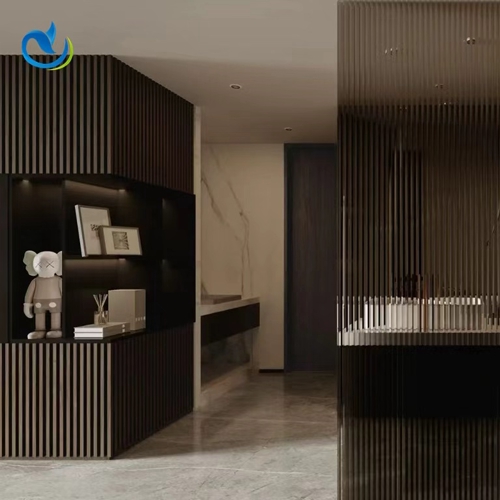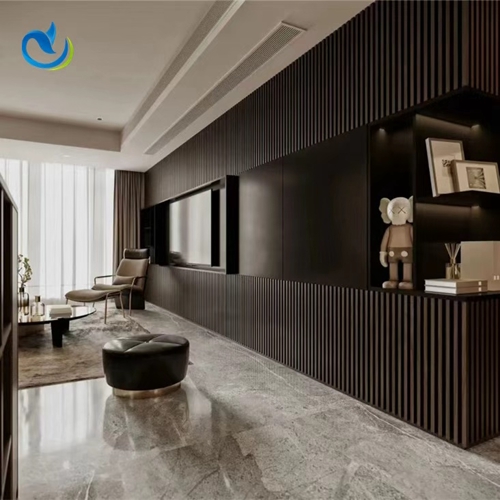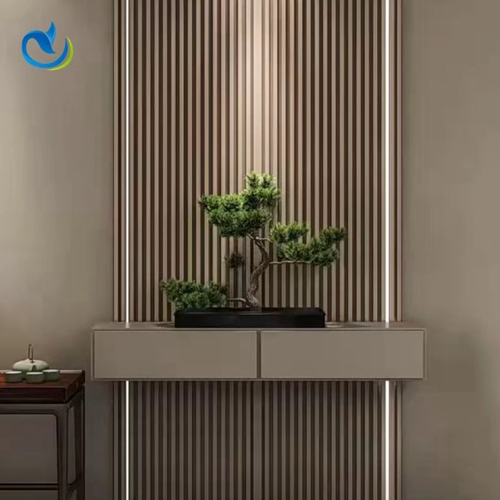The Current Situation of the Wood-Plastic Industry
2025-10-31
Wood-plastic composite is a new type of environmentally friendly material made by mixing wood fibers with plastics (mainly thermoplastics such as polyethylene and polypropylene).It has the advantages of being water-resistant, anti-corrosive, moisture-proof, wear-resistant, flame-retardant, having a long service life and being recyclable.Widely used in fields such as construction, furniture, landscape gardening, packaging and logistics, and automotive interiors.
I. Industry Scale and Growth:
Global Market: According to industry research institutions, the global market size of wood-plastic composite materials is expected to be approximately 6.21 billion US dollars in 2023.The compound annual growth rate (CAGR) from 2016 to 2023 is approximately 11.55%.It is projected that by 2030, the global market size of wood-plastic composite materials will exceed 12.5 billion US dollars.
Chinese Market: China is the world's largest producer and exporter of wood-plastic products.Since the 1990s, when wood-plastic composite materials entered China, the industry has experienced rapid development.In 2023, China's production of wood-plastic composites reached about 4.58 million tons, an increase of 43% from 3.2 million tons in 2019, with a CAGR of approximately 10.69% from 2016 to 2023.It is expected that in the coming years, the market for wood-plastic composite materials in China will continue to experience rapid growth, and by 2030, the production volume is expected to reach 6.81 million tons.
II Industry Chain:
Upstream: : The raw material supply segment, mainly including waste plant fibers such as wood powder, rice husks, and straw, as well as thermoplastic plastics such as polyethylene and polypropylene.These raw materials mainly come from agricultural waste and wood processing residues, and they have cost advantages.
Midstream: In the manufacturing process, raw materials are processed into wood-plastic composite products through extrusion molding, co-extrusion technology, and other techniques.In recent years, with the continuous advancement of technology, the performance of wood-plastic composite materials has been continuously improving, such as their wear resistance and UV resistance.
Downstream: application areas and market sales links.The application of wood-plastic composite materials in the construction industry accounts for over 60%, and they are mainly used for outdoor flooring, fences, and garden landscapes, etc.In addition, applications in areas such as furniture, logistics packaging, and automotive interiors are also continuously expanding.
III. Technological Innovation and Upgrading:
Research and development of new materials: The enterprise continuously increases its investment in research and development, developing high-performance and highly weather-resistant new wood-plastic composite materials to meet the needs of various fields.For instance, by adding functional additives, the fire resistance, antibacterial properties, etc. of the materials can be enhanced.
Innovation in manufacturing processes: Using full-coverage co-extrusion technology, micro-foaming technology, etc., to improve the product's appearance quality and mechanical performance.At the same time, promote the application of intelligent manufacturing technology to enhance production efficiency and product quality.
Environmental Performance Optimization: Focus on the recyclability and biodegradability of materials, developing degradable or bio-based wood-plastic composites to reduce environmental impact.
IV. Policy Environment and Development Opportunities:
Policy Support: The government has introduced a series of policies to encourage the development of green building materials and circular economy, providing a favorable policy environment for the growth of the wood-plastic composite materials industry. For example, building a resource recycling system and promoting green building materials.
Market demand: As consumers' demands for environmental friendliness, aesthetics and durability increase, the application prospects of wood-plastic composite materials in fields such as building materials and furniture are very broad.Especially in emerging fields such as green buildings and new energy vehicles, the demand for wood-plastic composites will continue to grow.
Internationalization development: Chinese wood-plastic composite materials products have been exported to multiple countries and regions. With the advancement of the "Belt and Road" initiative, the export market is expected to expand further in the future.
Summary:
As a representative of green building materials, the wood-plastic industry has shown a vigorous development trend in recent years, driven by the global rise in environmental awareness and the promotion of circular economy policies. The Chinese wood-plastic composite material industry, with its huge market size and rapid growth rate, has become an important force in the global wood-plastic industry. In the future, with continuous technological advancements and ongoing policy support, the wood-plastic industry will continue to develop towards high performance, environmental friendliness, and recyclability, providing more high-quality solutions for green building, eco-friendly packaging, and other fields.








